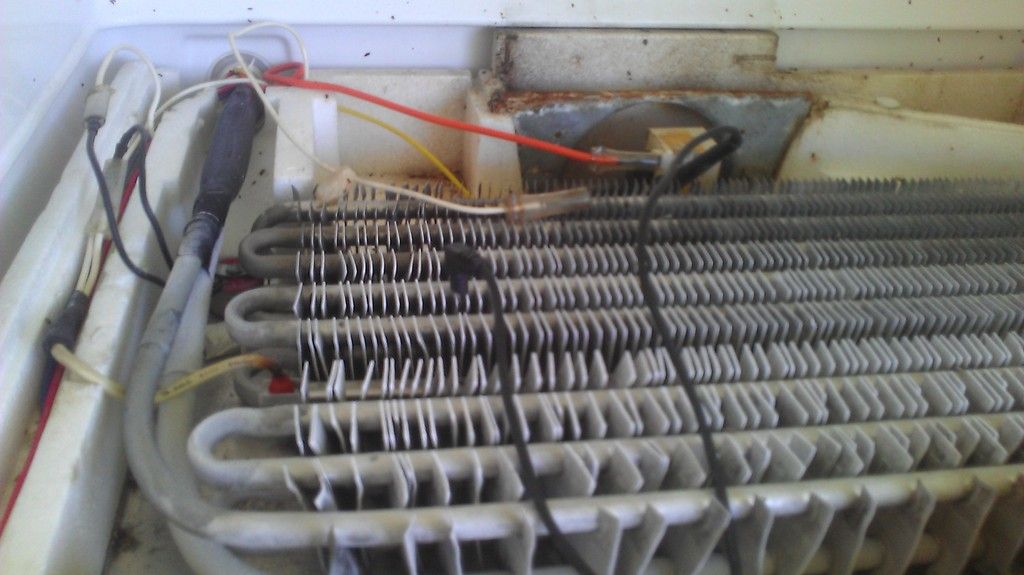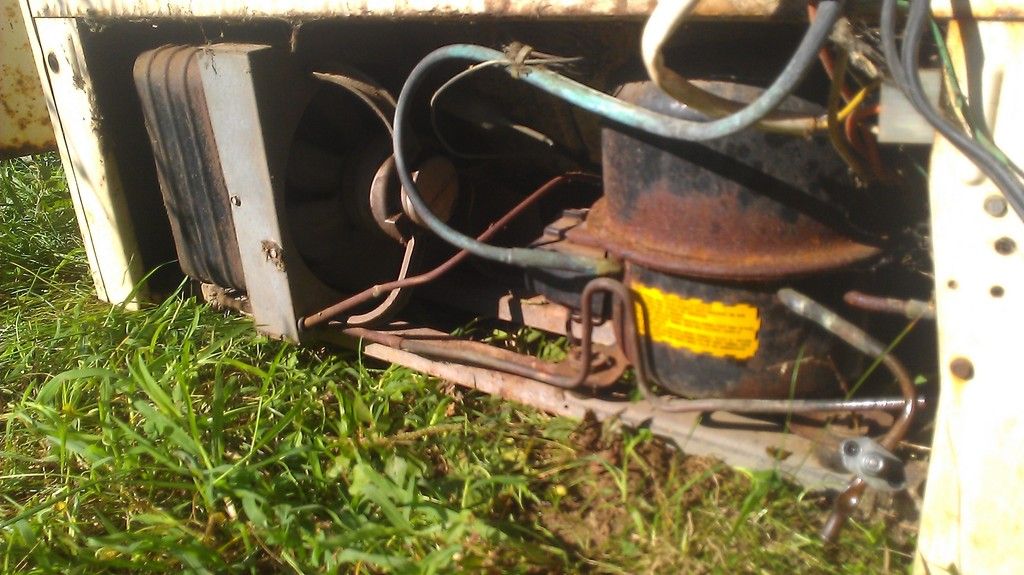I edited my previous post with preliminary pics of the old fridge. No idea of the model number or brand, however, the kenmore, whirlpool, ge and others are 99.9% the same under the emblems. The model and field replacement part poster is on the top back of the unit, but this one is old and has obviously been bleached, then faded. I made out an R12 on the barely legible print. How old might this one be? At least it's not olive or some other color of baby poo...
I pried the freezer floor out and opened up the evaporator cover today. The foam was water logged, and immediately broke into a big piece and a few small pieces. Checking for juice, I found that this model, as most ancient units and lots of newer ones do, had a constant supply of power to the thermostat (red wire). From there, the thermostat directly switches power to everything except the interior light (orange wire). All of the defrost control stuff switches the neutral side of everything (white wires everywhere). This includes the defrost sensor switch, the defrost timer, and the defrost heating element. There is a yellow wire feeding the heating element, I imagine the defrost timer enables and disables power to the heater during certain times in the cycle.
The problem with this unit was not the fan. After removing the evaporator cover, I probed for, and found, 120VAC on the orange wire of the fan. The fan coil ohmed out at around 70 ohms dc. I disconnected the white wire from the fan and grounded that motor terminal straight to the evaporator (grounded for safety) using a voltmeter lead. Presto! the fan worked. I'm not going to troubleshoot this thing any further, except maybe checking the defrost sensor switch.

Note the condition of the white wire of the defrost heater, it looks like it may have found some moisture and arced a few times while it was supposed to be shut off.
I put a bullet piercing valve on the factory charging pipe to take a look at pressure, and to make sure there wasn't anything awry. At rest, the unit has 40-50 psig on the port. During operation, it quickly pulls down to below atmosphere until the condenser backs up some liquid, then rises to not much above atmosphere. This is normal for low side pressure on an ancient R12 unit.

The entire condensing unit and compressor lays on a sled in this unit, which can easily be yanked as one piece and relocated. The rails can be seen in the pic above; they screw into the corners of the frame at each end. I will reclaim the charge on this unit and relocate the whole thing inside the bottom of the crisper. I will cut the liquid line (the one running diagonally in front of the fan frame) close to the drain pan. The mfr put in a little loop in the liquid line to help warm the drain pan: how convenient for me! I can chop the loop out and splice the two ends back together.
I will braze the suction line (bluish from sweating) apart at the joint near the compressor and may be able to just bend the end upwards. There is a plug in the floor of the fridge box that lies directly above where the cap tube is zip tied to the suction line. The cap tube strainer feeds from the drip pan heater loop. If I'm lucky, the suction and liquid lines will feed right through the floor and be able to be connected without having to lengthen them. Either way, the deed will be done tomorrow. Then the unit will be ready for torture testing and drying some food (after a thorough pressure washing of course).